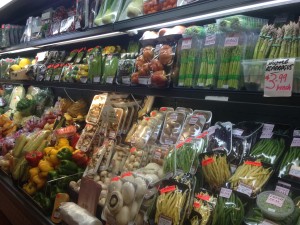High or Low GI? Not the be all and end all.
I’m sure many of you are familiar with, have seen or have heard of the glycemic index (GI). You know, those commercials and food labels that tell you why a particular food is more healthy because it is ‘low GI’. In short, the GI is a measure of how quickly a given food can raise blood sugar. The test is done solely on a specific carbohydrate food with a score between 1-100.
High GI foods such as sugar, white potatoes, cereal etc raise blood sugar more quickly, thus are scored higher. Low GI foods such as whole grains, nuts and vegetables do not cause the same rises in blood sugar, so are scored lower… But, do all the meals we consume only consist of high GI foods, or low GI foods? No. They are often a mix of both.
Consuming a high GI food (for example white potatoes) as part of a mixed meal of lower GI foods (vegetables, legumes) with a lean protein, would more than likely mean the overall GI of the meal is quite low. The vegetables and legumes in this case may slow the digestion of the white potatoes.
What does this mean for you?
Well, while you may see a lot of marketing to do with high GI and low GI foods, or have heard of people cutting out potatoes because of their GI score, just remember the GI index should not govern someone’s carbohydrate choices exclusively. Many different types of food both low and high GI have a wide range of vitamins and minerals which can benefit your health.
Eat a variety of whole and minimally processed foods and enjoy what is on your plate!

